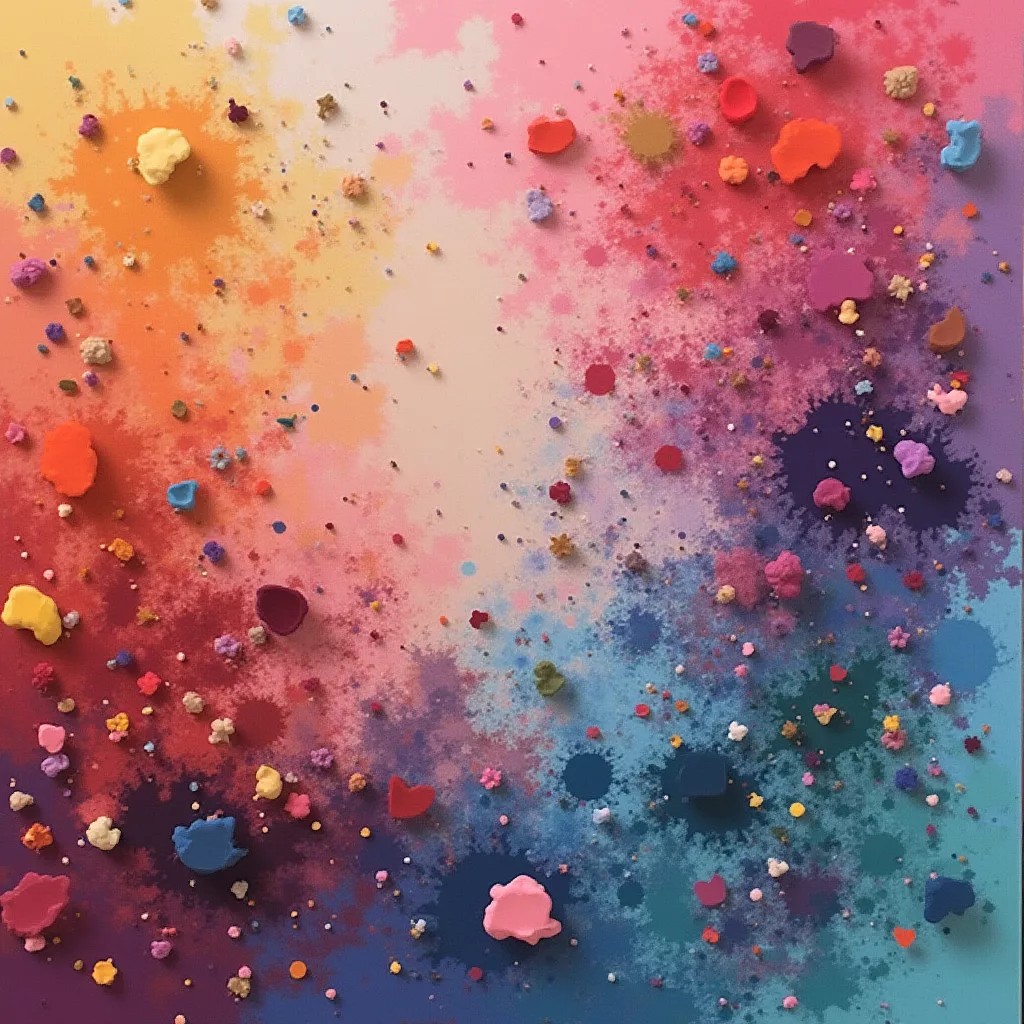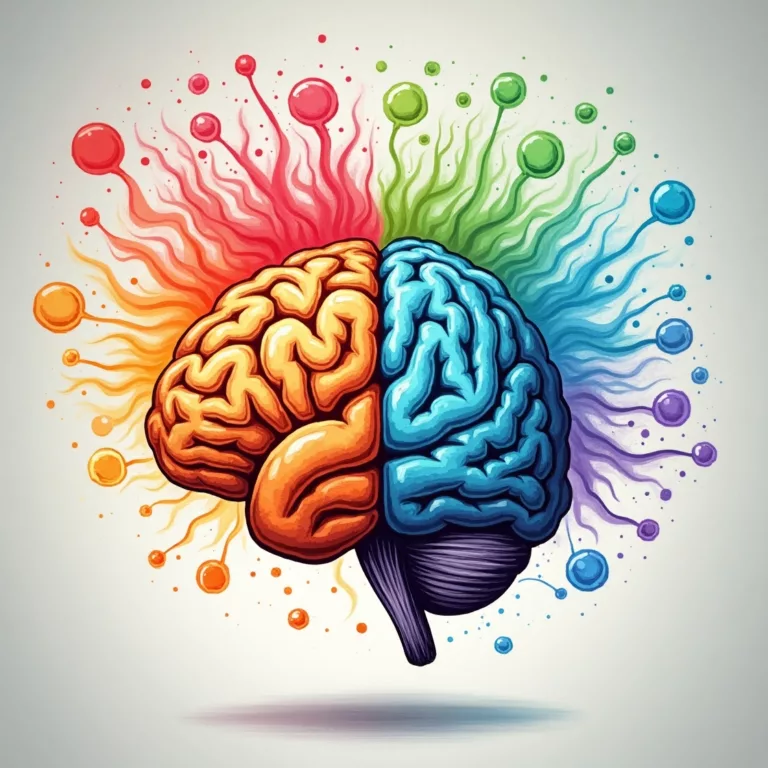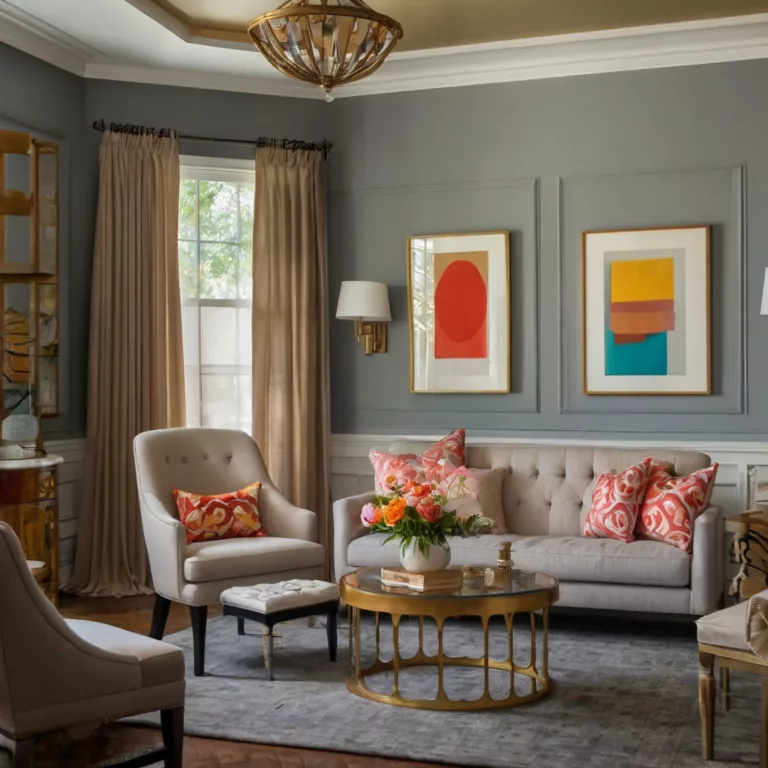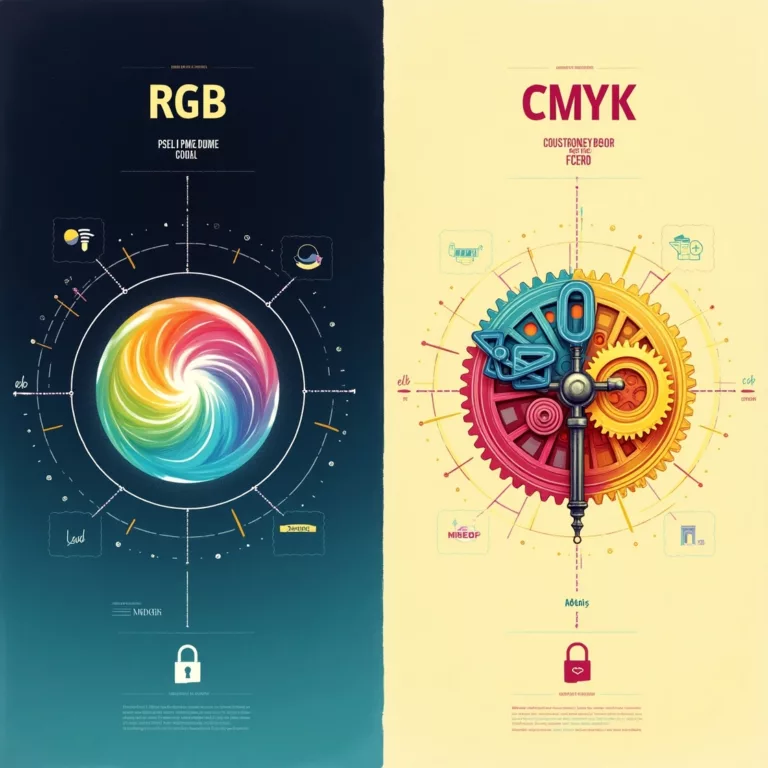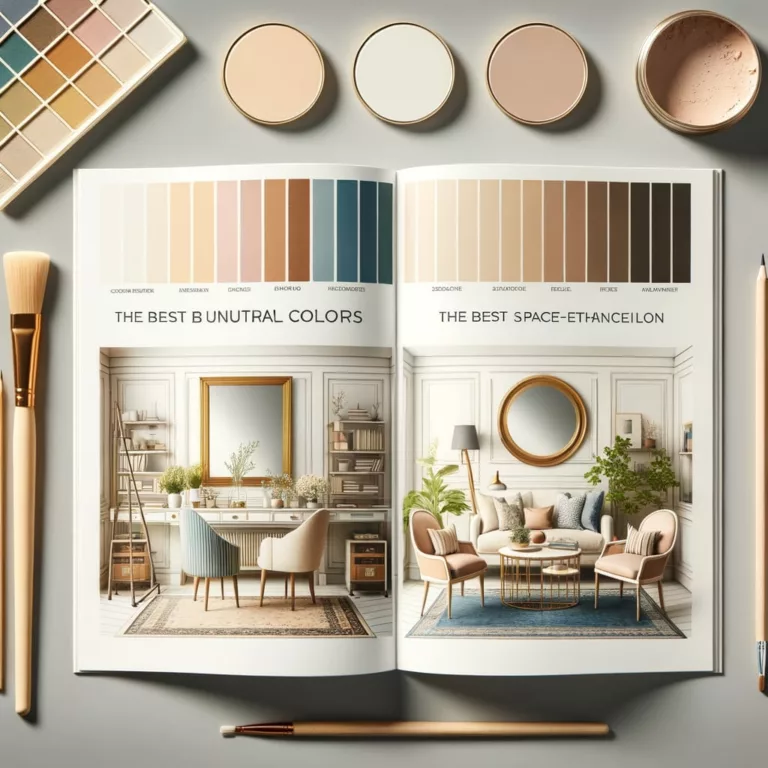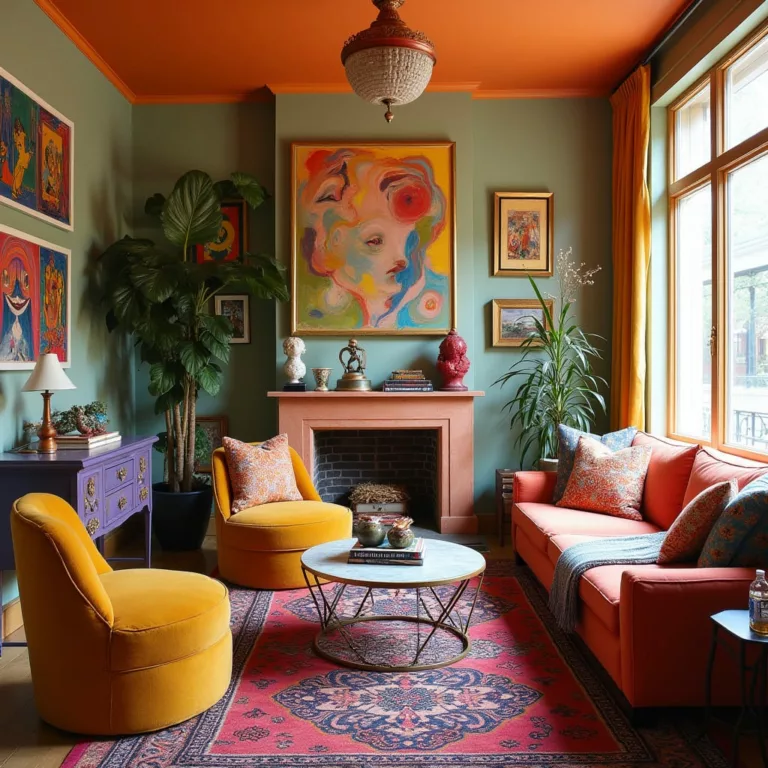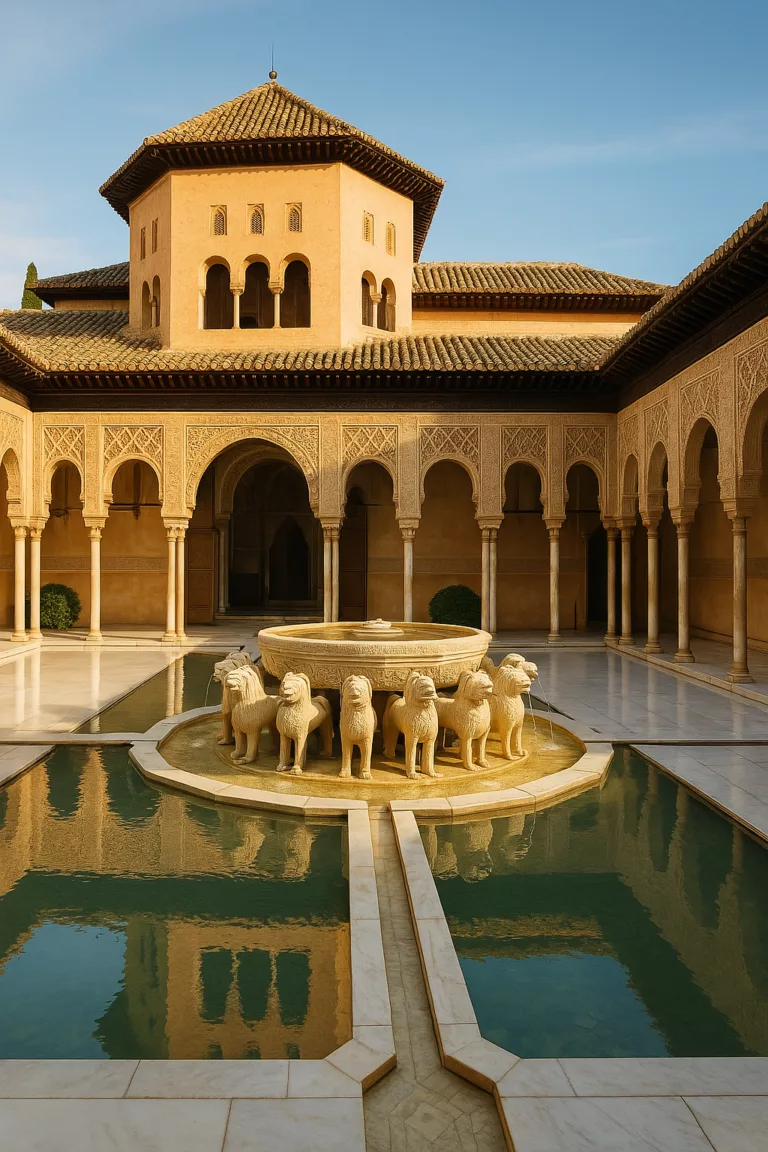Colors in Art & Creativity:
Introduction
Color is perhaps the most powerful and immediate element in visual art. It has the capacity to affect our emotions instantly, communicate complex ideas wordlessly, and create lasting impressions that transcend time and culture. From the earliest cave paintings stained with ochre and charcoal to today’s digital art created with millions of precise color values, artists have continuously explored, innovated, and mastered the use of color to express their vision of the world.
This comprehensive exploration delves into the multifaceted relationship between color and artistic expression, examining how colors convey emotions, analyzing iconic paintings through their color usage, comparing different painting mediums and their unique color properties, exploring advanced color blending techniques, and providing guidance on developing a sophisticated color sense.
How Artists Use Colors to Express Emotions
The Psychological Foundation of Color
The connection between colors and emotions has deep psychological roots. While some color associations may vary across cultures, many emotional responses to color appear to be nearly universal:
- Red: Passion, anger, love, danger, power
- Blue: Calm, sadness, serenity, stability, depth
- Yellow: Joy, optimism, caution, energy, intellect
- Green: Growth, renewal, harmony, envy, abundance
- Purple: Mystery, spirituality, royalty, imagination
- Orange: Enthusiasm, creativity, warmth, attention
- Black: Sophistication, elegance, mystery, grief, formality
- White: Purity, innocence, minimalism, sterility, peace
Artists throughout history have intuitively understood these connections, even before color psychology was formally studied, and have deliberately manipulated color to evoke specific emotional responses.
Historical Evolution of Emotional Color Expression
Renaissance and Baroque Periods
During these eras, colors often carried symbolic meanings alongside their emotional impact. Ultramarine blue, more valuable than gold at the time, was reserved for the Virgin Mary’s robes, symbolizing heavenly purity while conveying serenity and divine peace. Caravaggio’s revolutionary use of dramatic tenebrism—extreme contrasts between light and dark—created emotional intensity through the tension between deep blacks and illuminated colors.
Romanticism
Romanticist painters like J.M.W. Turner and Caspar David Friedrich used color to express sublime emotions and spiritual experiences. Turner’s late works featured swirling, luminous color fields that seemed to dissolve form, expressing awe, wonder, and the overwhelming power of nature. His “Snow Storm: Steam-Boat off a Harbour’s Mouth” (1842) uses whites, grays, and hints of warm tones to convey the terrifying yet beautiful chaos of a storm at sea.
Expressionism
The Expressionist movement placed emotional expression above all else. Artists like Edvard Munch and Ernst Ludwig Kirchner deliberately distorted colors to communicate inner emotional states rather than objective reality. In Munch’s “The Scream” (1893), the blood-red sky and swirling blues create an atmosphere of existential anxiety that resonates viscerally with viewers, demonstrating how non-naturalistic color can paradoxically express emotional truth more powerfully than realistic representation.
Color Field Painting
Mark Rothko’s large color field paintings demonstrate perhaps the purest exploration of color’s emotional impact. His rectangular fields of luminous color, often in reds, oranges, deep blues, and blacks, create immersive emotional experiences rather than representing objects or narratives. Rothko insisted his paintings expressed “basic human emotions—tragedy, ecstasy, doom,” showing how abstract color alone can communicate profound emotional states.
Contemporary Techniques in Emotional Color Usage
Modern artists have expanded this tradition with sophisticated approaches to color and emotion:
Chromotherapy-Inspired Art
Some contemporary artists draw inspiration from chromotherapy (color therapy) principles, creating works specifically designed to induce particular emotional or even physiological responses. Installation artists like James Turrell create immersive color environments that alter viewers’ perceptions and emotional states through carefully calibrated colored light.
Digital Color Psychology
Digital artists can now manipulate color with unprecedented precision. Video game designers, for instance, often use subtle color grading to enhance emotional storytelling—shifting from warm, saturated palettes in safe areas to desaturated cool tones as players enter threatening environments, manipulating the player’s emotional state without their conscious awareness.
Cultural Context and Subversion
Contemporary artists often play with cultural color associations, either reinforcing or deliberately subverting them. Anish Kapoor’s exclusive use of Vantablack (the darkest artificial substance) explores how ultra-black can create disorienting void-like effects that confuse viewers’ spatial perception, creating unease through the absence of color and reflection.
Famous Paintings & the Colors That Made Them Iconic
“Starry Night” by Vincent van Gogh (1889)
Van Gogh’s masterpiece is defined by its swirling ultramarine blues contrasted with brilliant yellows and oranges. The deep blues dominate the composition, creating a dream-like quality, while the vibrant yellows of the stars and moon create focal points that seem to pulse with energy. Van Gogh wrote to his brother about deliberately using color contrasts to express emotions rather than faithful reproduction, demonstrating his deliberate manipulation of color for expressive purposes.
The painting’s iconic status owes much to this blue-yellow complementary contrast, which creates maximum visual vibration and psychological tension. The blues evoke the mystery and vastness of night, while the yellows suggest hope and divine presence—a color relationship that perfectly expresses van Gogh’s spiritual and emotional connection to the night sky.
“The Persistence of Memory” by Salvador Dalí (1931)
Dalí’s surrealist masterpiece uses a desert-like palette of muted browns, ochres, and pale blues to create its dreamlike quality. The subdued colors evoke the strangeness of twilight and contribute to the painting’s unsettling atmosphere. The low saturation palette (except for the blue sky) creates a parched, timeless quality appropriate for a meditation on the flexibility of time.
Art historians note that the slightly sickly quality of the colors—beiges and browns with slightly greenish undertones—contributes to the painting’s disquieting effect. The limited palette unifies the bizarre elements into a coherent whole, making the surreal elements more believable and thus more disturbing.
“Guernica” by Pablo Picasso (1937)
Picasso’s deliberate choice to paint this depiction of the bombing of Guernica in grisaille (grayscale) rather than color was revolutionary. The absence of color universalizes the suffering depicted and gives the work a documentary, newspaper-like quality appropriate to war reportage. The black, white, and gray palette also evokes the ashes of destruction and strips away any potential for decorative beauty that might distract from the horror being portrayed.
The monochromatic approach forces viewers to confront the forms, expressions, and symbolic elements without the emotional distraction that color might provide. This denial of color becomes a powerful emotional statement in itself—suggesting a world drained of humanity and joy.
“The Scream” by Edvard Munch (1893)
As previously mentioned, Munch’s “The Scream” uses a blood-red sky against cool blues to create visual tension that mirrors emotional distress. The unnatural colors communicate that we are seeing an inner psychological landscape rather than objective reality. The swirling, fluid forms of the landscape are enhanced by the flowing color transitions, suggesting that in states of extreme anxiety, the boundaries between self and world dissolve.
The contrasting reddish-oranges and blue-greens create a complementary opposition that is inherently unstable and tense—perfectly matching the psychological state being portrayed. The figure on the bridge stands between these color worlds, caught in the tension between them.
“Water Lilies” series by Claude Monet (1914-1926)
Monet’s late water lily paintings demonstrate his revolutionary approach to color. Rather than using local color (the actual color of objects), Monet painted the effects of light on water, creating complex color relationships that change throughout the day. The paintings feature subtle violet-blues, greens, and pinks that create a shimmering surface that seems to move and change as you view it.
The absence of horizon or traditional perspective makes color the primary organizing element of these works. The paintings become pure environments of color that envelop the viewer. Monet’s cataracts in his later years actually influenced his color perception, leading to more reddish tones in his late works—demonstrating how personal physiology can affect artistic color expression.
Oil vs. Watercolor vs. Acrylic: How Colors Behave Differently
Understanding how color behaves differently across various painting media is essential for artists to achieve their desired effects. Each medium has its own “color personality” based on its physical and chemical properties.
Oil Paint: Depth and Luminosity
Physical Properties Affecting Color
Oil paints consist of pigments suspended in drying oils (typically linseed, walnut, or safflower). This composition gives them several distinctive color characteristics:
- Refractive Index: Oil has a refractive index close to that of many pigments, allowing light to penetrate multiple layers of paint before reflecting back to the viewer’s eye. This creates oil paint’s characteristic depth and luminosity, where colors seem to glow from within.
- Extended Working Time: Slow drying time allows for wet-into-wet blending, creating subtle gradations and transitions between colors that can appear almost seamless.
- Layering Capacity: Through techniques like glazing (applying thin, transparent layers of color over dry layers), artists can create complex optical mixtures where light passes through multiple color layers and reflects back, creating rich, jewel-like effects impossible in other media.
Historical Color Significance
The Old Masters developed sophisticated oil painting techniques that maximized these properties. Rembrandt’s portraits, for example, often feature dozens of thin glazes that create extraordinary subtlety in flesh tones, with cool underlayers showing through warm overlayers in ways that mimic how real skin interacts with light.
Contemporary Applications
Contemporary oil painters like Jenny Saville use the medium’s blending capabilities to create complex flesh tones that convey the translucency and depth of human skin. Her paintings feature multiple layers of contrasting colors that optically mix, creating psychologically charged representations of bodily presence.
Watercolor: Transparency and Spontaneity
Physical Properties Affecting Color
Watercolor’s distinctive behavior comes from its water-soluble gum arabic binder and its typical application on paper:
- Transparency: Watercolor’s primary characteristic is transparency, allowing the white of the paper to reflect light back through the pigment, creating luminosity through an entirely different mechanism than oil paint.
- Drying Shift: Many watercolors change significantly as they dry, typically becoming 10-30% lighter, requiring artists to compensate for this shift when mixing colors.
- Granulation: Some watercolor pigments settle into the paper’s texture unevenly, creating textural effects that add character and variation to color fields. Pigments like ultramarine blue and cerulean blue are known for this quality.
- Bleeding and Flowing: Water’s surface tension creates distinctive edge effects, blooms, and flows that can be either controlled or allowed to develop spontaneously.
Historical Color Significance
J.M.W. Turner revolutionized watercolor technique through his atmospheric color effects, creating luminous skies and waters through multiple transparent washes and strategic lifting of color. His approach influenced generations of landscape painters and eventually helped inspire Impressionism.
Contemporary Applications
Contemporary watercolorists like Joseph Zbukvic use the medium’s inherent properties to create atmospheric effects where colors bleed into one another, creating soft transitions that evoke fog, mist, and atmospheric perspective. His work demonstrates how watercolor’s “difficult” properties can become expressive advantages.
Acrylic: Versatility and Stability
Physical Properties Affecting Color
Acrylics are pigments suspended in an acrylic polymer emulsion, giving them distinctive characteristics:
- Color Shift: Acrylics typically darken slightly upon drying (the opposite of watercolor), with color shift of about 10-20% depending on the brand and color.
- Versatility: Can be used transparently like watercolor or opaquely like oil, depending on how much water or medium is added, offering a wide range of color effects.
- Permanence: Minimal yellowing or color shifting over time compared to oils, maintaining color brilliance for decades with proper care.
- Fast Drying: Quick drying time limits certain blending techniques but enables rapid layering and sharp-edged color transitions.
Historical Development
Though relatively new (developed in the mid-20th century), acrylics quickly became important to art movements like Pop Art. Artists like Andy Warhol and Roy Lichtenstein used acrylics’ flat, graphic color properties and quick drying time to create their iconic works with clean edges and commercial-looking color fields.
Contemporary Applications
Contemporary artists like Kehinde Wiley use acrylics’ versatility to combine realistic portraiture with decorative, pattern-based backgrounds, taking advantage of the medium’s ability to create both subtle modeling and flat, graphic areas within the same composition.
Direct Comparison of Color Properties
| Property | Oil | Watercolor | Acrylic |
|---|---|---|---|
| Transparency | Can be transparent or opaque depending on pigment and application | Inherently transparent | Versatile – can be transparent or opaque |
| Color Intensity | High saturation with deep, rich darks | Colors often appear fresher and more luminous due to light reflecting through pigment from white paper | Slightly less saturated than oils when dry |
| Mixing Behavior | Colors maintain integrity when mixed; less prone to making mud | Colors can quickly become muddy if overmixed | Blends well but dries quickly, requiring decisive mixing |
| Layering Effect | Earlier layers affect final appearance through optical mixing | Earlier layers can be reactivated by subsequent wet applications | Earlier layers remain stable; no reactivation issues |
| Color Stability | Some colors yellow over time | Excellent lightfastness if quality pigments used | Excellent long-term color stability |
| Working Properties | Slow-drying allows extended blending time | Must work quickly in some techniques; can reactivate color | Quick-drying requires different blending approaches |
Mastering Color Blending Techniques in Painting
Color blending—the art of transitioning from one color to another—is one of the most challenging and rewarding aspects of painting. Different approaches can create strikingly different visual and emotional effects.
Fundamental Blending Approaches
Mechanical Blending
This technique involves physically mixing colors together on the canvas or paper:
- Wet-into-Wet: Applied while both colors are still wet, creating soft, diffused transitions. Essential for atmospheric effects in all media but particularly characteristic of oil painting.
- Feathering: Using a dry or slightly damp brush to soften edges between colors, maintaining some distinction while eliminating hard lines.
- Scumbling: Applying thin, broken layers of opaque paint over dry underlying colors, allowing both to remain visible and optically interact.
Optical Blending
Rather than physically mixing pigments, these techniques create the illusion of blending through visual perception:
- Glazing: Applying transparent layers of color over dry underlayers, creating rich optical mixtures where the eye blends the separate layers.
- Stippling/Pointillism: Placing small dots or marks of distinct colors next to each other, which the eye mixes at a distance. Georges Seurat’s “A Sunday Afternoon on the Island of La Grande Jatte” demonstrates this technique at its most sophisticated.
- Hatching and Cross-hatching: Using directional lines of different colors that visually blend when viewed from normal viewing distances.
Advanced Color Blending Techniques
Split Complementary Transitions
This sophisticated approach involves transitioning between complementary colors (opposites on the color wheel) by using intermediate colors that share qualities of both:
- Identify the complementary colors (e.g., red and green)
- Instead of directly blending them (which can create muddy browns), introduce a split complementary color (e.g., blend red into yellow-green, then into blue-green)
- This creates a harmonious transition while maintaining color vibrancy
Joaquín Sorolla mastered this technique in his beach scenes, where he creates transitions from warm sunlit skin tones to cool violet shadows without muddiness.
Broken Color Technique
Pioneered by the Impressionists, this approach involves placing strokes of pure color side by side rather than blending on the palette:
- Use distinct brushstrokes of pure or near-pure colors
- Allow the eye to optically mix these colors at viewing distance
- Creates vibrant, shimmering effects where colors seem more alive than smoothly blended passages
Claude Monet’s haystack and cathedral series demonstrate this technique, where patches of seemingly disparate colors coalesce into unified light effects when viewed from a distance.
Temperature Shifting
This sophisticated approach maintains color harmony while creating visual interest:
- When transitioning between colors, shift the temperature (warm/cool) as well as the hue
- For example, when moving from yellow to blue, transition through a warm gray rather than green
- This creates more nuanced transitions and can suggest atmospheric effects
Richard Schmid, a contemporary master of representational painting, uses temperature shifts extensively to create natural-looking transitions in landscapes and portraits.
Medium-Specific Blending Techniques
Oil Painting Techniques
- Grisaille Underpainting with Glazes: Create a monochromatic underpainting establishing values, then apply transparent colored glazes over it. This technique, used by Flemish masters, creates extraordinarily luminous color effects.
- Alla Prima Blending: Wet-into-wet blending within a single session, creating soft transitions while maintaining freshness and spontaneity. John Singer Sargent mastered this approach, creating seemingly effortless blends in portraits.
Watercolor Techniques
- Graded Wash: Creating smooth color transitions by maintaining a bead of wet paint and gradually introducing a new color, allowing them to flow together naturally.
- Charged Brush: Loading different parts of the brush with different colors, then applying in a single stroke to create a blend that follows the brush movement.
- Wet-into-Wet Diffusion: Applying concentrated color into a wet area and allowing capillary action to create organic, flowing blends controlled by paper angle and moisture level.
Acrylic Techniques
- Open Time Extension: Using retarding mediums to extend drying time, allowing oil-like blending techniques while maintaining acrylic’s other advantages.
- Layered Transparency: Building up multiple thin, semi-transparent layers, allowing earlier layers to influence the final appearance without fully reactivating them.
Digital Color Blending
While traditional media rely on physical properties for blending, digital painting offers precise algorithmic control:
- Gradient Tools: Create mathematically perfect transitions between colors, useful for backgrounds and special effects.
- Blending Modes: Use multiply, overlay, screen, and other modes to create complex color interactions that would be difficult or impossible in traditional media.
- Alpha Channel Blending: Adjust transparency levels to create subtle overlays and transitions not possible with opaque physical media.
Digital artists like James Jean combine traditional color knowledge with digital techniques to create works with both painterly sensitivity and perfect control.
How to Develop a Strong Color Sense as an Artist
Developing sophisticated color understanding is both a technical and intuitive process. Here are comprehensive approaches to developing your color sense across multiple dimensions:
Foundational Color Theory and Practice
Start with Structured Color Exercises
- Limited Palette Studies: Work with just 3-4 colors plus white to understand how a restricted palette forces creative mixing and harmony.
- Color Charts: Create systematic mixing charts documenting interactions between your pigments. Richard Schmid’s approach of creating a “mother color” (a complex neutral mix) that can be added to any color pair to harmonize them is particularly valuable.
- Complementary Studies: Practice creating vibrant grays and neutrals by mixing complementary colors in varying proportions, developing sensitivity to how complementaries interact.
Develop Observational Skills
- Color Matching Exercises: Choose objects with complex colors and try to match them exactly, mixing until you achieve a perfect match. This develops both technical skill and observational acuity.
- Shadow Color Analysis: Study how shadows are rarely just darker versions of local color but often shift in temperature and sometimes hue. James Gurney’s studies of colored light are excellent references for this practice.
- Color Constancy Challenges: Practice identifying the “actual” color of objects under different lighting conditions, strengthening your ability to separate perceived color from mental color expectations.
Intermediate Development
Study Master Works Analytically
- Color Compositional Analysis: Study how masters like Vermeer or Diebenkorn organize colors to lead the eye and create harmony. Create diagrams mapping their color strategies.
- Palette Reconstruction: Attempt to reconstruct the palette of historical painters by identifying their primary, secondary, and tertiary colors, then mixing equivalent combinations with your own pigments.
- Museum Study: When possible, study original paintings in person, noting how colors interact differently from reproductions. Take notes on unexpected color combinations that create successful effects.
Expand Technical Vocabulary
- Glazing and Scumbling Practice: Master transparent and semi-transparent applications to create colors with depth that cannot be mixed directly on the palette.
- Edge Control: Practice controlling the hardness/softness of edges between color areas, recognizing how edge quality affects color perception.
- Atmospheric Perspective Studies: Create studies focusing solely on how colors shift with atmospheric depth, developing sensitivity to subtle temperature and saturation changes.
Advanced Color Development
Perceptual Training
- Josef Albers Exercises: Practice his “Interaction of Color” studies, which demonstrate how colors are always perceived relationally rather than absolutely.
- Simultaneous Contrast Awareness: Create compositions that maximize simultaneous contrast effects, where surrounding colors influence the perception of a central color.
- Afterimage Experiments: Study how staring at intense colors creates complementary afterimages, revealing how our visual system processes color information.
Emotional and Psychological Dimensions
- Color Mood Studies: Create multiple versions of the same subject using different color schemes to evoke different emotional responses.
- Personal Color Journal: Document your subjective responses to different color combinations, developing awareness of your own psychological color associations.
- Cultural Color Research: Study how color meanings vary across cultures and time periods, expanding your understanding of color’s communicative potential.
Professional Integration
- Problem-Solving with Color: Practice using color to solve specific visual problems, such as using temperature contrast to create depth or selective saturation to direct attention.
- Style Development: Work to develop a personal color approach that becomes part of your artistic signature, like Monet’s violets or Rothko’s luminous color fields.
- Teaching Others: Explaining color concepts to others will solidify your understanding and reveal areas needing further development.
Practical Exercises for Ongoing Development
- Color Matching Challenge: Each day, find an object with a complex color and mix that exact color in your medium of choice.
- Limited Palette Days: Work with an extremely limited palette (even just two complementary colors plus white) for extended periods to push your mixing skills.
- Monochromatic Studies: Create fully realized images using only variations of a single hue, developing sensitivity to subtle value and saturation shifts.
- Color Memory Training: Study a scene or object, then put it away and try to mix its colors from memory. Check your results against the original to improve color memory.
- Color Script Creation: Before beginning a painting, create a small “color script” testing your planned palette and key color relationships.
- Master Copy Program: Systematically copy color aspects of master works, focusing on different artists’ distinctive approaches to color.
- Regular Plein Air Practice: Working from direct observation outdoors regularly will rapidly enhance your perception of natural color relationships and light effects.
Conclusion
Color in art is simultaneously one of the most intuitive and most complex elements to master. It operates on multiple levels simultaneously—technical, perceptual, psychological, and cultural—requiring artists to develop both analytical understanding and intuitive sensitivity.
The journey to color mastery is ongoing rather than destination-based. Even artists with decades of experience continue to discover new color relationships and effects. The most sophisticated color users often combine deep theoretical knowledge with childlike openness to visual discovery, maintaining freshness while building on established principles.
By studying how artists throughout history have used color to express emotions, examining the iconic color strategies of masterworks, understanding how different media affect color behavior, mastering advanced blending techniques, and systematically developing your color sense, you can transform your artistic practice and create work with greater visual impact and emotional resonance.
Color is not simply a decorative element but a fundamental language of visual expression—perhaps the most direct way art speaks to viewers across time, culture, and experience. Developing mastery of this language opens endless possibilities for artistic communication.
Art11deco

